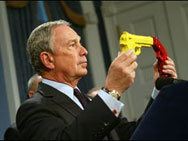
After reading about the main focus of this new book I had mixed emotions. Many people felt Jose Canseco had crossed the line. Could he be jealous of this incredible athlete and is looking to seek revenge? Is he looking for a way to make money and feels this storyline would be a “hot topic” to sell? While the reasons behind him doing this are unclear it is easy to see the negative effects of his book. Jose is jeopardizing the reputation of young athlete Alex Rodriguez. For some people when they read information they take it as true before even finding out the rest of the facts. With this book being published people may not take A. Rod as serious, believing he is on steroids. Teaming up with the media, Jose Canseco is jumping to conclusions based on what he hears. Mr. Rodriguez’s decision of not commenting when asked about Canseco’s wife could have to do with the fact that he does not want something that never happened to be blown up into a big deal. With the publishing of Vindicator this issue will be open for the entire world to voice their opinion on.
With little positive affects of this book, there is, however, some that can be touched on. This book enlightens readers on the problems found in major league baseball. While on the outside the sport may seem like a “perfect little world,” there is much more that goes on behind the scenes. Baseball players are constantly being questioned about the use of steroids and it seems like their exceptional ability becomes unheard of and their success becomes due to the injecting of steroids. Vindicator shows that even people in the major leagues are ordinary people just like us. It shows a feud between two competitors and problems such as “fighting” over a girl which most of us can relate to.
I was in awe when I read the summary of this book. I could not believe someone would go as far as commenting on the personal life of another to base a book around. The intention of this book was not to praise or honor the sport but rather attack it as well as the people who participate in it. I don’t think Jose Canseco took into consideration the people he was hurting when writing this book but thought more about the profit he would make when selling it. I also feel that people will look at him differently knowing that he decided to write about a situation involving his marriage rather then trying to keep his “personal” life separate from his “celebrity” life.


